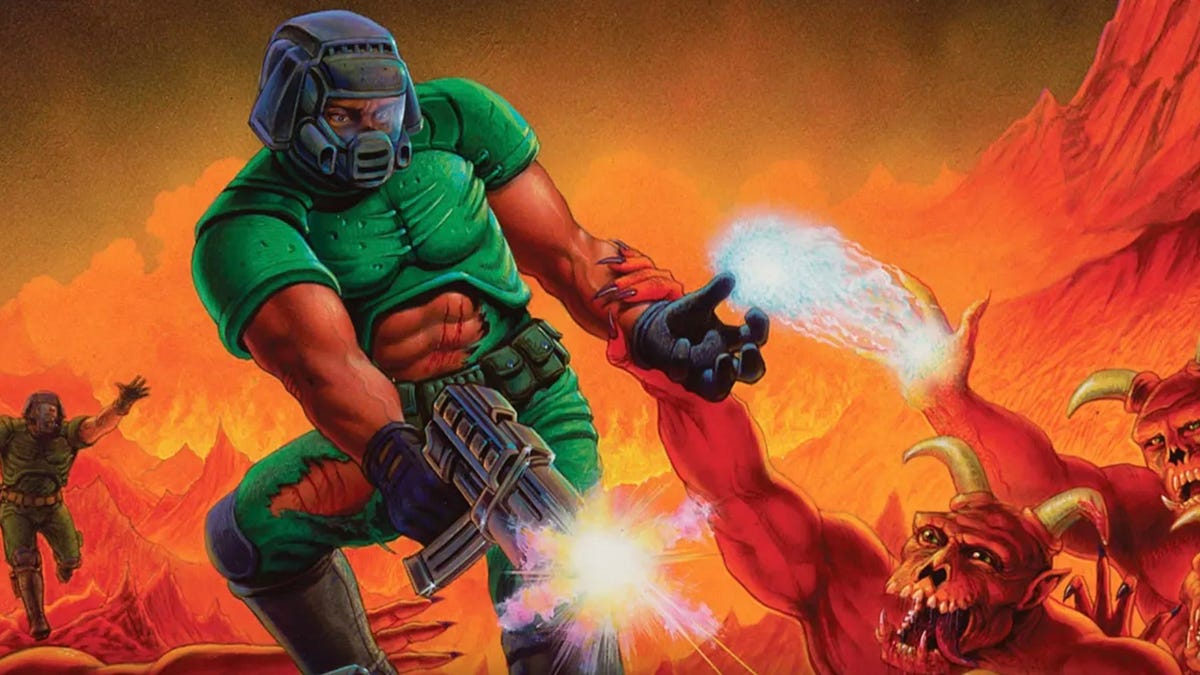There’s a certain rarified echelon of video games that have birthed entire genres based on their innovation, and their fingerprints can still be spotted all over many games today. Super Mario Bros. defined the concept of a side-scrolling platformer, DOTA made the MOBA mainstream, and Doom is the benchmark for first-person shooters. There’s no way that the likes of Halo, The Last of Us, or The Day Before would exist without the sick, twisted fantasies of iD Software’s developers in the early ‘90s.
By today’s standards, 1993’s Doom seems like a simple game. As a space marine sent to Mars, you’re tasked with running and gunning through cursed levels with walls of decay and screaming flesh, listening to metal-inspired tunes, and wielding a blood-spattering buffet of weaponry. Doom’s fast-paced mania brought a new level of immersion to games, allowing players to conduct a symphony of slaughter with chainsaws and and machine guns. Rather than observing your avatar from a distance, Doom’s enormously influential first-person perspective meant you were running and gunning through the lens of an action hero.
Doom did not create first-person shooting, but it did mark a dramatic evolution of the concept. You can see the DNA as far back as 1974’s Maze War, a game created by high-school students during a NASA work-study program that let players battle out in an early version of the internet. Or go back to 1980’s BattleZone, an arcade tank simulator made by Atari.
Developer id Software had taken its first crack at the shooter genre the previous year, with 1992’s Wolfenstein 3D. The software in the Nazi-hunting adventure was simpler and could only process walls at right angles, making the world feel compact and areas feel somewhat repetitive. That aesthetic works a lot better when you are fighting Mecha-Hilter inside a bunker, but not so much when you are killing demons in space.
With Doom, the team at id Software had to create a whole new technology that allowed them to create an explorable world that felt alive and menacing. The level design was much more complex, with areas being comprised of angles, alleys, stairs, variable lighting, and tall ceilings that hid mutants and demons behind every corner.
But all of that innovation needed to be able to be played on nearly every cruddy computer of the era. Doom’s first episode was distributed as a shareware title. It was the original free-to-play model that has overtaken the FPS industry, giving players just a taste of a game to persuade them to pay for the full experience. The game was an enormous success, turning a profit for id Software within a single day. By late 1995, Doom was estimated to be installed on more computers than Microsoft’s inescapable operating system, Windows 95.
Doom furthered a broader industry move toward 3D environments in games, and challenged lingering perceptions about the audience of interactive entertainment. In an era when violent video games were a hot-button political issue, Doom’s controversial gore transcended the niche to become a broader pop-culture phenomenon. It’s been ported to so many different gaming platforms—and non-gaming electronic devices, even pregnancy tests—that “can it run Doom?”—has become a decade-spanning meme.
All of those pieces created the original shooter formula that is ubiquitous today. It’s mind-bending to think of the extent to which a floppy disc and a Big Fucking Gun changed the industry. So next time you’re playing Fortnite, give that player in a Doom Guy skin a fist bump and thank him for his many sacrifices on Mars.

